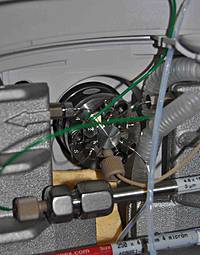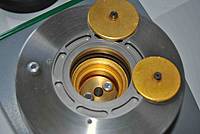
LC and Fluorescence detector
Fluorescence detection
Following excitation to a higher energy state the electrons of some molecular bonds shift to a lower energy level and release a portion of the energy at a different wavelength than that which was absorbed.
Roughly about 15% of all compounds have a natural fluorescence. The presence of conjugated pi-electrons especially in the aromatic components gives the most intense fluorescent activity. Also, aliphatic and alicyclic compounds with carbonyl groups and compounds with highly conjugated double bonds fluoresce, but usually to a lesser degree.
Fluorescence detectors provides time-programmable excitation and emission wavelength for naturally fluorescent compounds, allowing selectively detect some components while suppressing the emission of others.
They are located immediately after the stationary phase of the LC column to detect compounds as they elute from the column.
HPLC-fluorescence detection has a number of important benefits, including high sensitivity, high selectivity, and repeatability.
The presence of an analyte gives a response assumed to be proportional to the concentration. The instrument’s response to the analyte in the unknown should be compared with the response to a standard.
Our company
PHYTOSAFE
2 rue Marx Dormoy
64000 Pau
FRANCE
Tél : +33 (0)5 59 84 79 91
Fax : +33 (0)5 59 84 80 55
Email : contact@phytosafe.com
Terrestrial ecotoxicology
Acute toxicity to earthworms
Our company
PHYTOSAFE
2 rue Marx Dormoy
64000 Pau
FRANCE
Tél : +33 (0)5 59 84 79 91
Fax : +33 (0)5 59 84 80 55
Email : contact@phytosafe.com
